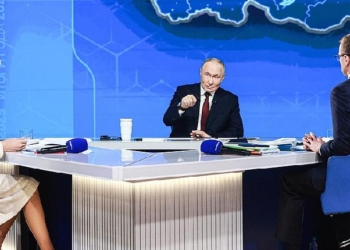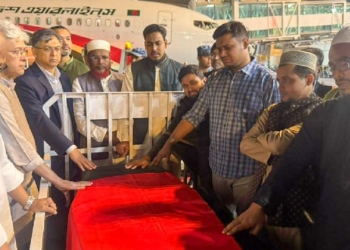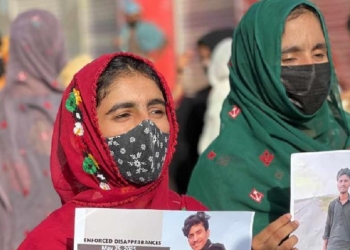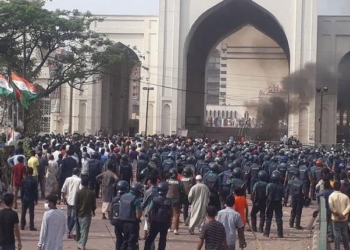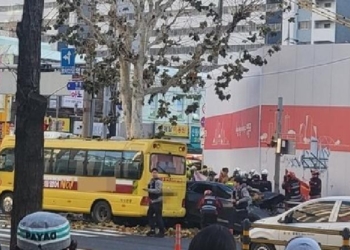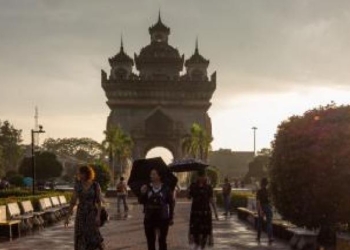New Delhi: In more recent years, India-US relations have been invigorated by not just a confluence of political or strategic interests, but it is also flourishing across a wide spectrum of sectors like education, health, science and technology and culture.
This was evident from Prime Minister Narendra Modi’s recent US visit where he showcased India’s cultural heritage and its growing influence on the world stage — from leading a record-breaking yoga event to forging defence and semiconductor production deals.
PM Modi and his US counterpart Joe Biden called for collaborative efforts, spanning diverse fields such as advanced computing, artificial intelligence, telecommunications, and higher education.
An Observer Research Foundation study highlights that emerging technology will be among one of the sectors key to shaping the arc of a strong Indo-US relation in the years to come.
The latest investment proposal by US-based Micron Technology will give a fresh impetus to the sector, besides creating thousands of job opportunities.
The two nations have signed a new implementation arrangement on artificial intelligence, advanced wireless, and quantum technologies. The partnership extends to the field of telecommunications as well, with a joint focus on advancing 5G and 6G technologies, including Open Radio Access Network (RAN) systems
The initiative on Critical and Emerging Technologies (iCET), announced last year, aims to provide cutting edge technologies to the rest of the world, thus bolstering connections between the US and Indian innovation ecosystems.
Opening up new frontiers in space, India recently signed the Artemis Accords, which advance a common vision of space exploration.
The White House announced last month that both NASA and ISRO have agreed on a joint space mission in 2024.
The US National Science Foundation has announced 35 joint research collaborations with India’s Department of Science and Technology.
With an increase of nearly 20 per cent last year, Indian students are on pace to soon become the largest foreign student community in the US.
The two countries have launched a new Joint Task Force of the Association of American Universities and leading Indian educational institutions, including the IITs.
Additional Fulbright-Kalam Climate Fellowships for research, administered by the US-India Educational Fund, will advance cooperation between leading scholars in India and the US on climate change.
The US is also enabling up to 100 additional US undergraduate students to study or intern in India via the Benjamin A Gilman International Scholarship Program.
Speaking of health initiatives, the robust and longstanding Vaccine Action Programme (VAP) is one of the most glaring examples of cooperation in the health sector with an aim to support novel vaccine research, human immunology, vaccine related technologies, and translational research.
The India-US Cancer Dialogue, hosted by President Biden’s Cancer Moonshot, brings together experts from both countries to identify concrete areas of collaboration to accelerate the rate of progress against cancer.
The US National Institute of Diabetes and Digestive and Kidney Diseases will sign an agreement with the Indian Council of Medical Research to further basic, clinical, and translational research on diabetes.
The two countries have also called out for expanded collaboration on digital health platforms including responsible use of cutting-edge technologies like AI, and to explore cooperation in research and the use of traditional medicine.
Moving towards sustainable development, under India’s National Green Hydrogen Mission and the USA’s Hydrogen Earth Shot, the two countries hope to work towards achieving their climate and energy goals.
India’s VSK Energy LLC will invest up to $1.5 billion to develop a new, vertically integrated solar panel manufacturing operation in the United States, including a 2.0 GW module-and-cell manufacturing plant in Colorado.
USAID signed an MOU with the Ministry of Railways to work together on Indian Railways’ target to become a “net-zero” carbon emitter by 2030.
Cultural cooperation between the two countries manifests in diverse ways with many private institutions in the US teaching Indian cultural arts.
The University of Houston has a Tamil Studies Chair and the University of Chicago has reinstated the Vivekananda Chair to further research and teaching of India’s history and culture.
This year, India took its culture and traditions to the global stage by PM Modi leading 177 nations in performing yoga at the UN headquarters in New York on June 21.
The two nations continue negotiations for a Cultural Property Agreement, which would help to prevent illegal trafficking of cultural property from India and enhance cooperation on the protection and lawful exchange of cultural property.
The US recently handed over 105 trafficked antiquities to India, which represent a diverse range of Indian culture from the 2nd-3rd century CE to the 18th-19th century CE. In the last seven years, the US has returned 278 antiques to India.
Last year, the US Mission in India commemorated 20 years of cultural collaboration with the country through the Ambassadors Fund for Cultural Preservation (AFCP) projects.
Cultural activities by the US embassy are grouped into Reading India Series, featuring events related to Indian authors and writings; Performing India Series covering music, dance and theatre; Beholding India Series showcasing film screening, art and photo exhibitions; Understanding India Series with lectures on comprehensive and cross-sectional views of India, and Young India Series, featuring cultural events catering to younger audience.
(IANS)





